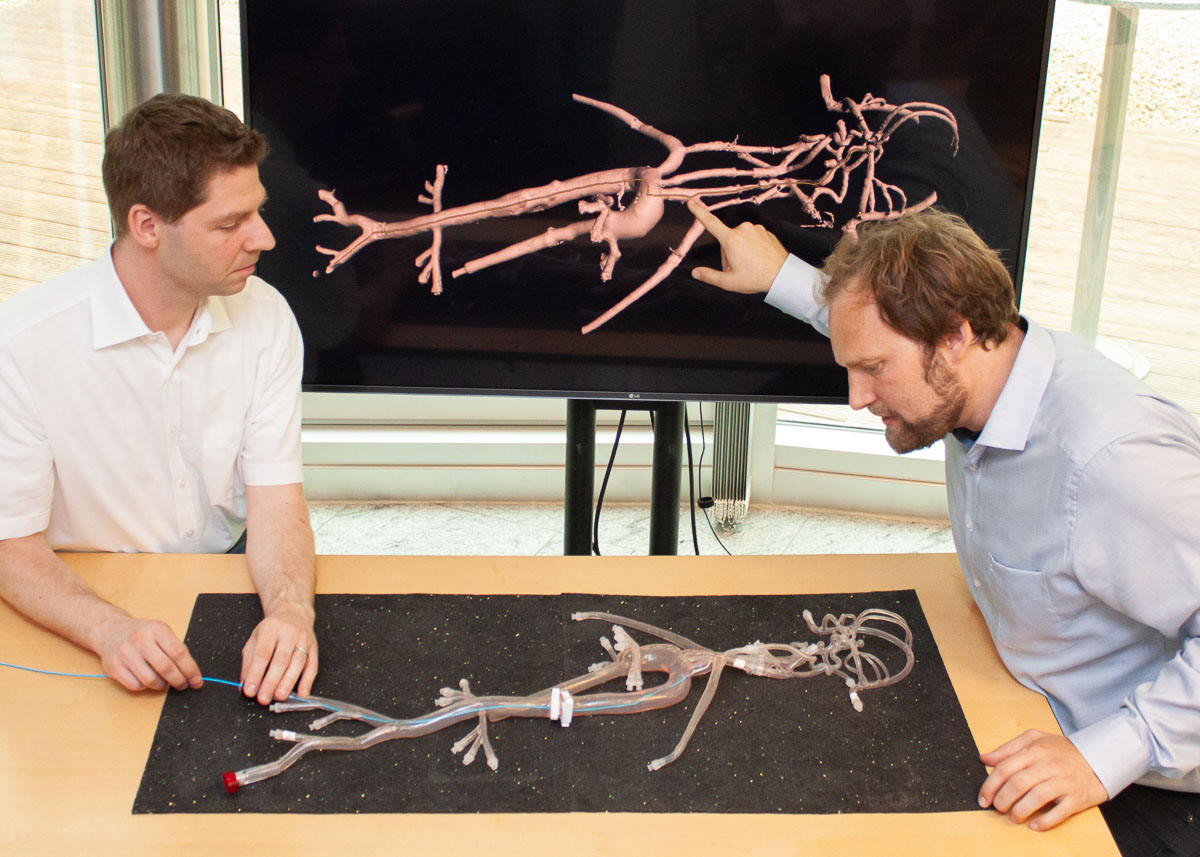Clinical Challenges
Reaching the target region during endovascular procedures like angioplasty or embolization is challenging. Within a constrained timeframe, the clinician has to navigate through a tortuous vasculature with numerous bifurcations, largely based on information gathered from 2D angiographic projections of the 3D vasculature. Consequently, clinical studies report long endovascular navigation times, significant ionizing radiation doses, and a significant amount of unhealthy contrast agents used during the navigation. We develop tools for path planning, vessel assessment, and intraoperative support, such as 3D navigation that overcome these challenges.
 Fraunhofer Institute for Digital Medicine MEVIS
Fraunhofer Institute for Digital Medicine MEVIS